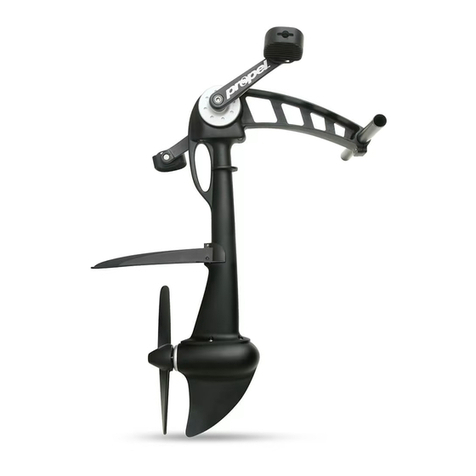
2. Unhook the seat retainer buckle.
3. Move the seat to the rear position, pushing down so that the seat pan
slides under the side retainer clips.
4. Reinstall the front seat.
5. Move the Easy Foot footbraces from the center to the rear set of tracks.
6. Reinstall the 28” thwart tube into the boat’s center position.
7. Re-attach the cargo strap to the middle seat strap.
Transporting Your Ultimate
To transport your kayak securely, we suggest that you install a rigid bar, sport
rack system on the roof of your vehicle. Your boat will remain most stable when
loaded upside down. If you are unlikely to encounter rain during your road trip,
you can also load it with the hull down.
Caring for Your Ultimate
A fresh water rinse for the hull and all moving parts is all that is necessary to
keep your boat clean. It is heartily recommended after paddling in salt water,
especially if your boat is outfitted with a rudder system. Thoroughly rinse the
rudder, rudder cables, and foot braces with fresh water to remove dirt, sand and
salt.
We also recommend that you treat your First Class Seat™ fabric with a mold
retardant cleaner (found at grocery or home improvement stores) if you use it
infrequently or if it will be stored in a moist or poorly circulated.
You should periodically lubricate all moving parts (like the footbraces, skeg or
rudder) to keep them in top working order. We recommend using 303 Lubricant,
available at outdoor specialty and select home improvement retailers. For
polyethylene hulls, 303 Lubricant can also be used to protect the luster of the
boat’s surface.
Polyethylene
Superlinear® polyethylene is a tough, resilient material which can withstand a
reasonable amount of impact and usage over rough surfaces. However, over
time and with continued use, abrasions can reduce the hull’s ability to glide
smoothly through the water. You can minimize raised texture on the hull by
scrapping the polyethylene ridges off with a sharp knife or buffing them out with
sand paper. Also, please remember that the hull is tough, not indestructible, but
minor damages may be repairable. Contact your local Native Watercraft dealer
for additional information and assistance regarding polyethylene repair.
Storage Tips
The ideal environment for storing your kayak is a shaded, dry space. Never
store your kayak in direct sunlight. Position it upside down with each end
Ultimate 14.5 Owner’s Manual 7




























